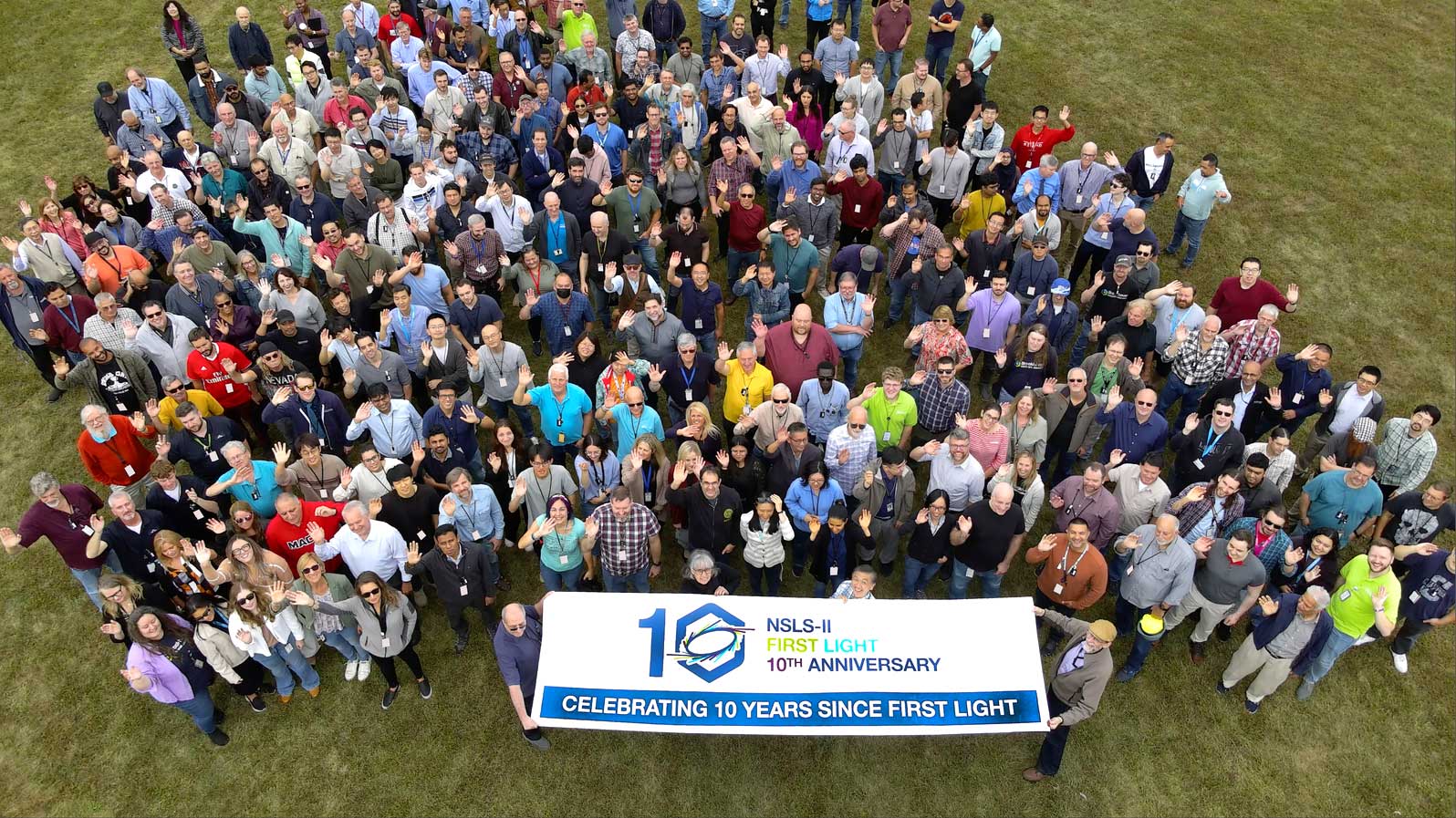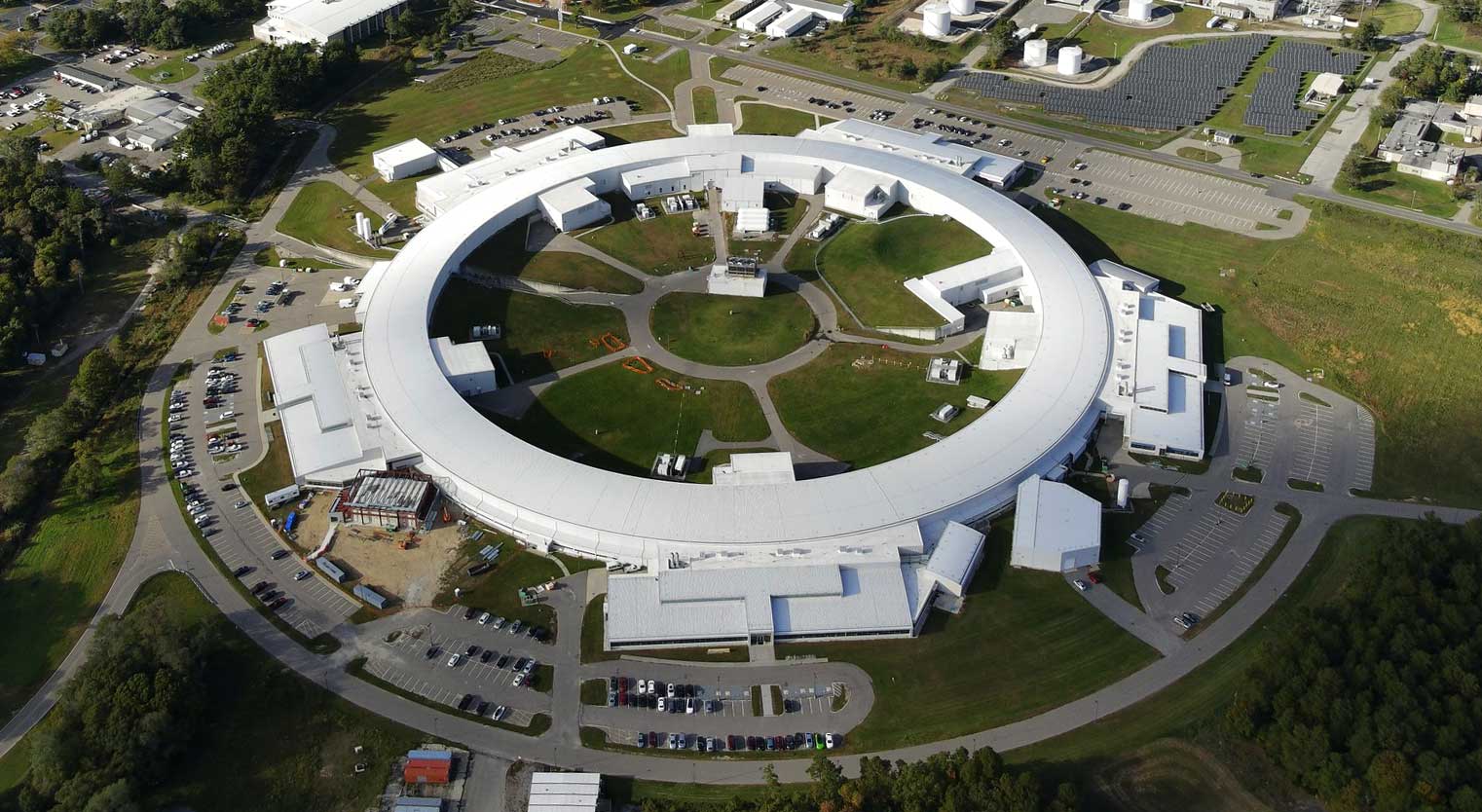

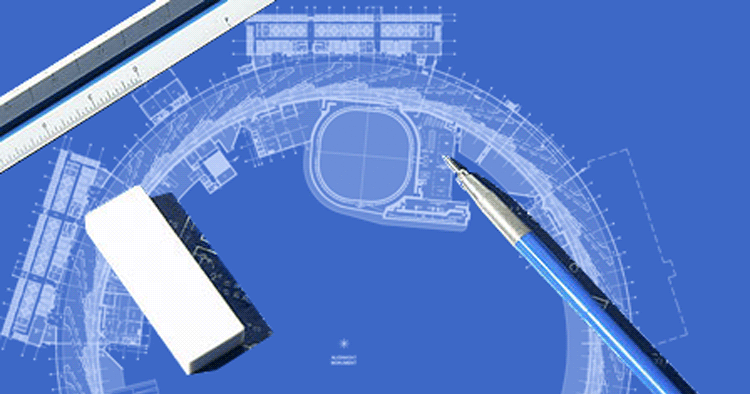
Critical Decision Zero
The Department of Energy (DOE) grants "Critical Decision Zero" (CD-0) status to the NSLS-II project, which confirms the "mission need" and is the first key step in the long process to making the facility a reality. CD-0 gives the project the go-ahead to begin the planning and design process. More...

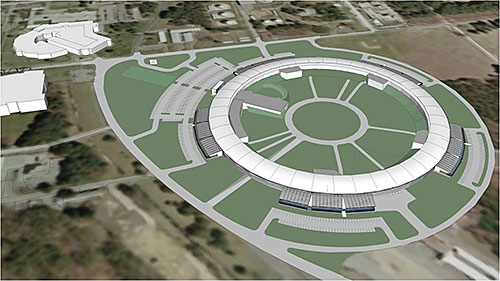
Critical Decision 1
DOE grants Critical Decision 1 (CD-1) to the NSLS-II project. The project is slated to start construction at Brookhaven Lab in 2009 and is estimated to be complete and ready for operations in 2015. More...

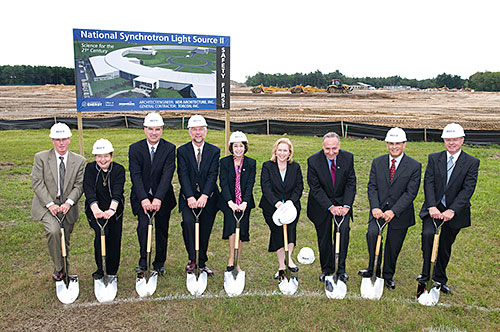
Groundbreaking
Construction of NSLS-II begins. Torcon, Inc., a New Jersey firm with many projects in New York State is chosen to construct the building that will house the accelerator ring, the largest component of the machine. More...

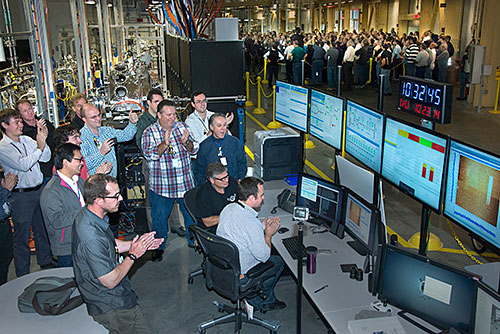
First Light
The first six NSLS-II beamlines achieve “first light” — their first X-rays — in the fall of 2014, starting on October 23 with the Coherent Soft X-ray Scattering (CSX) beamline. CSX is quickly followed by the X-ray Powder Diffraction (XPD) beamline, the Hard X-ray Nanoprobe (HXN), the Coherent Hard X-ray (CHX) beamline, the Inelastic X-ray Scattering (IXS) beamline, and the Submicron Resolution X-ray Spectroscopy (SRX) beamline. More...

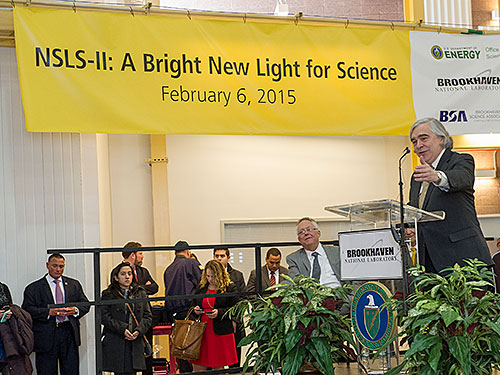
NSLS-II Dedication
The Secretary of the U.S. Department of Energy, Ernest Moniz, declares NSLS-II open for business at a dedication ceremony at Brookhaven Lab. The ceremony also includes remarks from Senator Charles E. Schumer, Congressman Lee Zeldin, Stony Brook University President and BSA Co-Chair Samuel L. Stanley Jr., and Brookhaven Lab Director Doon Gibbs. More...

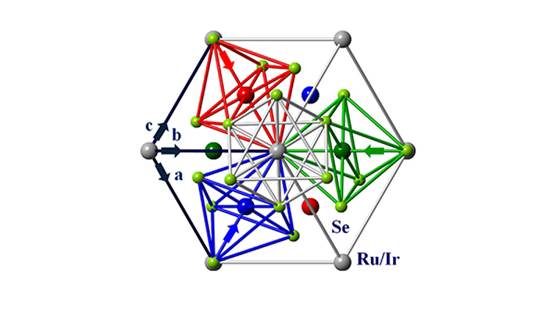
First Publication
The first publication at NSLS-II came less than 5 months after first light. Brookhaven researchers used the XPD beamline to report enhanced thermoelectric power and electronic correlations in the semiconductor RuSe2. More...

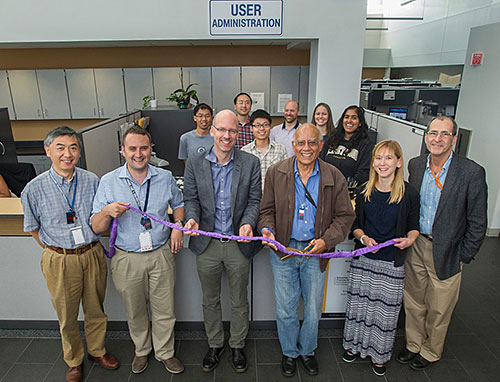
First Users
During the summer of 2015, NSLS-II hosts its first scientific and industrial users. The Coherent Soft X-ray (CSX) beamline welcomes researchers from the University of California, San Diego, and the Submicron Resolution X-ray (SRX) beamline hosts a team from the Henkel corporation, a leading global firm in the chemical industry. More...

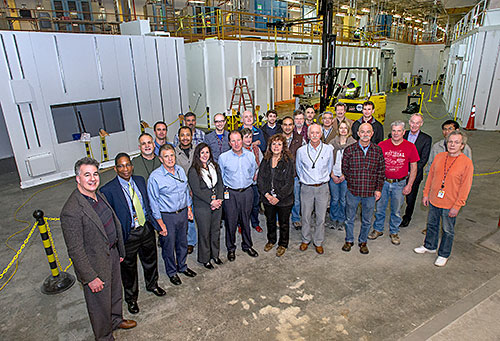
Structural Biology Beamlines Begin Operations
The three Advanced Beamlines for Biological Investigations with X-rays (ABBIX) — Highly Automated Macromolecular Crystallography (AMX), Frontier Microfocusing Macromolecular Crystallography (FMX), and Life Science X-ray Scattering (LiX) — begin operating in 2016. The ABBIX beamlines are developed and funded through an inter-agency agreement between the Department of Energy and the National Institutes of Health. More...

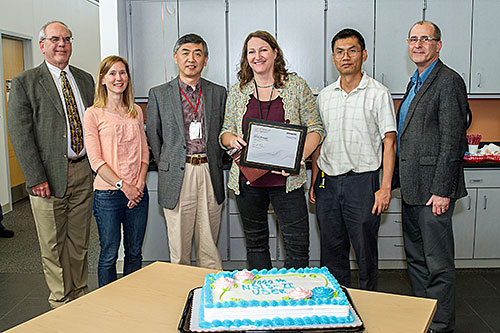
The 1,000th User
Joanna Krueger, a professor of chemistry at the University of North Carolina at Charlotte, becomes the 1,000th lifetime user when she walks into the NSLS-II facility for beamtime on June 28, 2017. This milestone is hit less than a year and a half into operations. More...

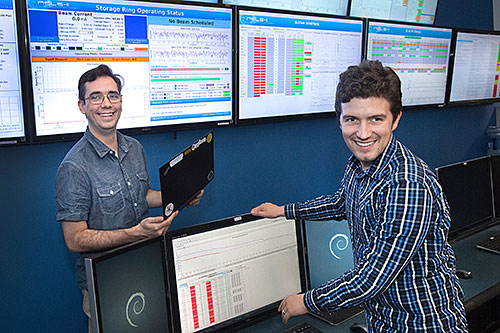
Bluesky Is Developed
Scientists at NSLS-II develop new software to streamline data acquisition called “Bluesky.” The software significantly eases the process of collecting and comparing data and is now used to facilitate scientific collaboration between light sources worldwide. More...

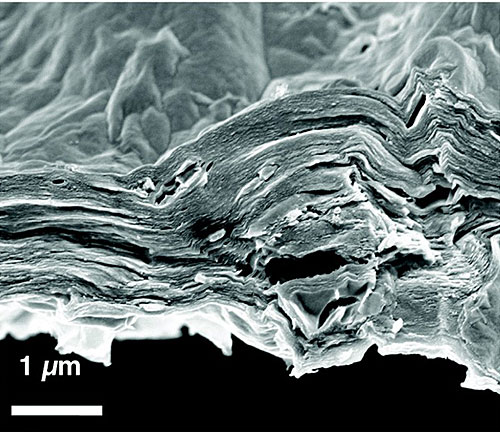
Top cited paper of 2017
2D molybdenum and vanadium nitrides synthesized by ammoniation of 2D transition metal carbides (MXenes) – Nanoscale – Nov 2017
At the XPD beamline, researchers study the “MXenes,” a family of 2D materials based on carbon or nitrogen with potential applications in energy storage and plasmonics. They show how a gas treatment, such as ammoniation, can convert carbide MXenes into nitride MXenes with higher electrical conductivity and metallic behavior, revealing a new avenue for 2D materials synthesis. More...

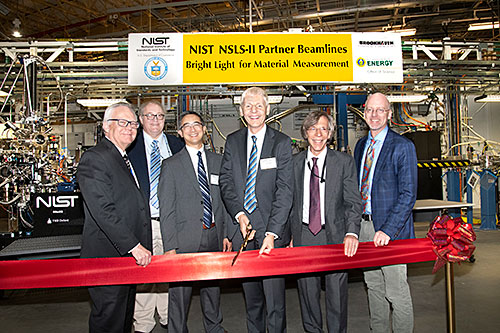
Completion of the Partner Beamline Project
Close collaborations with external organizations lead to five new partner beamlines that begin operations during this time. The National Institute of Standards and Technology (NIST) constructs three beamlines: SST1, SST2, and BMM. The New York Structural Biology Consortium (NYSBC) develops the NYX beamline and Case Western Reserve University receives an NSF grant to construct the XFP beamline. More...

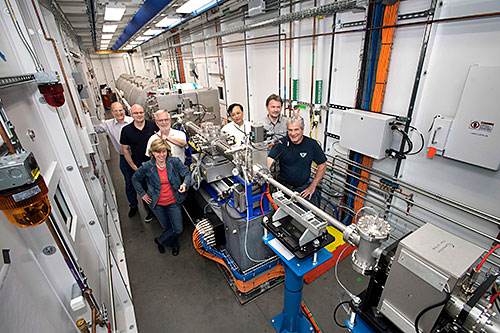
Completion of the NEXT Beamlines
The NSLS-II Experimental Tools (NEXT) project delivers five more beamlines funded by the Department of Energy (DOE) Basic Energy Sciences (BES) program. Between 2017 and 2018, the Electron Spectro-Microscopy (ESM), Integrated In situ and Resonant Hard X-ray Studies (ISR), Inner-Shell Spectroscopy (ISS), Soft Inelastic X-ray Scattering (SIX), and Soft Matter Interfaces (SMI) beamlines begin operations. More...

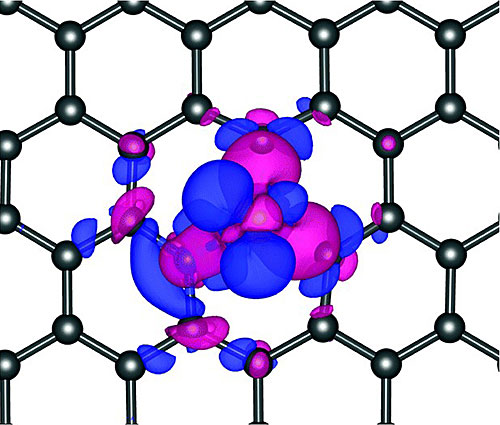
Top Cited Paper of 2018
Isolated Ni single atoms in graphene nanosheets for high-performance CO2 reduction – Energy and Environmental Science – Feb 2018
Using several techniques, including x-ray absorption at NSLS-II's Inner-Shell Spectroscopy (ISS) beamline, researchers study single atoms of nickel embedded in two-dimensional graphene nanosheets. They are looking at this system as a possible catalytic approach for carbon dioxide (CO2) reduction, the process by which atmospheric CO2 is converted into usable products, such as fuels.

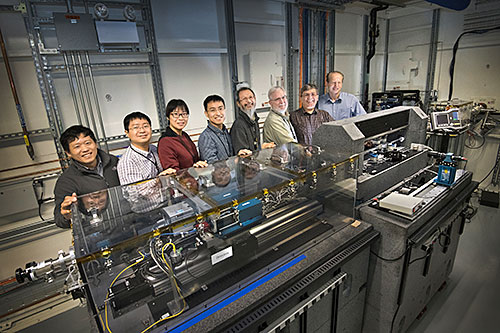
Completion of Beamlines Developed by NSLS-II (BDN)
Using funds allocated through the NSLS-II operations budget (DOE-BES), NSLS-II develops an additional six beamlines through the repurposing of existing beamline equipment from the original NSLS: CMS, FIS, MET, QAS, TES, and XFM. This project also funded the completion of the PDF beamline and the FXI beamline. All BDN beamlines started operations between 2017 and 2018. More...

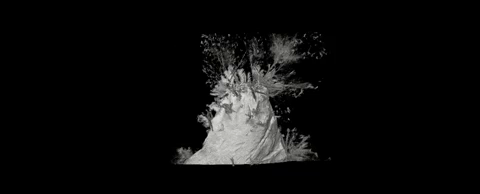
Nanoscale X-ray Imaging at Warp Speed
Scientists at the Full Field X-ray Imaging (FXI) beamline reduce the time it takes a transmission x-ray microscope to image samples in 3-D from over 10 minutes to just one minute, while still producing images with exceptional 3-D resolution—below 50 nm More...

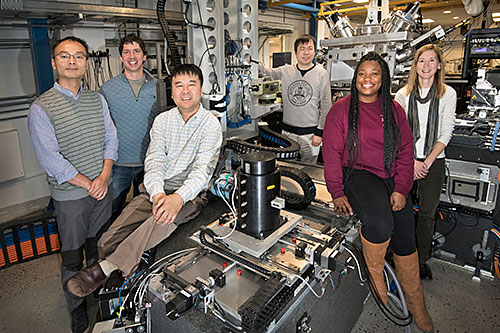
First Nanotomography of Single Bacterium With a Sub-15 nm Beam
Scientists at the HXN beamline generate the first 3-D nanoscale images of the elemental distribution and nanostructure of a single E. coli bacterium with a sub-15 nm beam. In addition to breaking the technical barriers on x-ray imaging resolution with this technique, the researchers develop a new method for imaging the bacteria at room temperature during measurements. More...

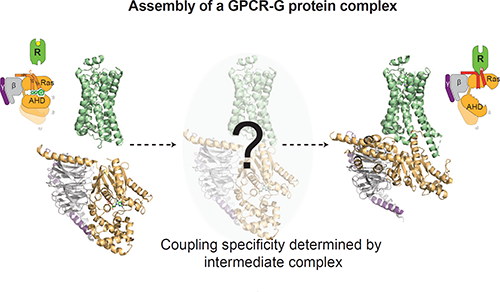
X-ray Footprinting Capture Signaling of a Membrane Receptor
Using the X-ray Footprinting of Biological Materials (XFP) beamline, researchers determine the timeline for how, and in which order, the different parts of a G-protein coupled receptor — a cell membrane receptor that is acted upon by over one-third of FDA-approved drugs — bind to signaling partners to form an activated signaling complex. More...

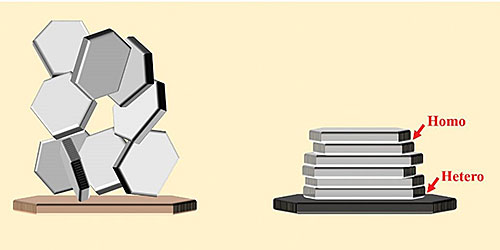
Top Cited Paper of 2019
Reversible epitaxial electrodeposition of metals in battery anodes – Science – Nov 2019
In a step forward for rechargeable batteries, which tend to suffer from electrodeposits at the interface between the metal electrodes and liquid electrolyte, researchers report a mechanism to regulate the nucleation, growth, and reversibility of metal electrodes using zinc grown on graphene. The resulting zinc anodes show exceptional reversibility over thousands of cycles and were studied at the Spectroscopy Soft and Tender (SST-1) beamline. More...

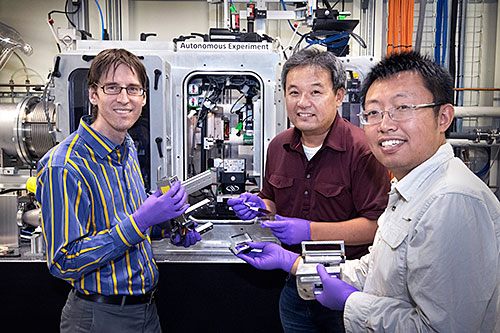
First AI-driven Autonomous Experiments at NSLS-II
Scientists from BNL and LBNL design, create, and successfully test a new algorithm to make smarter beamline measurement decisions. The algorithm, a form of artificial intelligence (AI), makes autonomous decisions to define and perform the next step of an experiment. More...

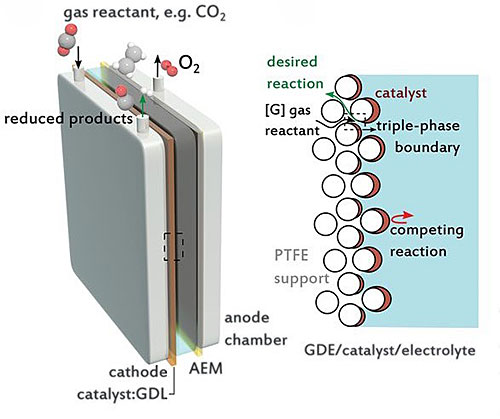
Top Cited Paper of 2020
CO2 electrolysis to multicarbon products at activities greater than 1 A cm-2 – Science – Feb 2020
In an effort to make water-based electrolysis a more viable method for converting greenhouse gases, such as carbon dioxide (CO2), to useable fuels and feedstocks, researchers present a catalyst architecture with a promising CO2 reduction performance. The architecture is a layered “heterojunction” consisting of an electrolyte sandwiched by metal electrodes coated with a superfine polymer and is studied in part at the CMS beamline at NSLS-II. More...

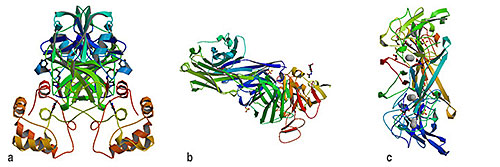
NSLS-II joins the fight against COVID-19
As the lab is running with minimal staff and resources during the pandemic lockdown, NSLS-II’s structural biology beamlines work around the clock to determine the atomic-level structure of viral components, including how they bind to receptors on human cells, so scientists can identify ways to develop vaccines and antiviral agents. More...

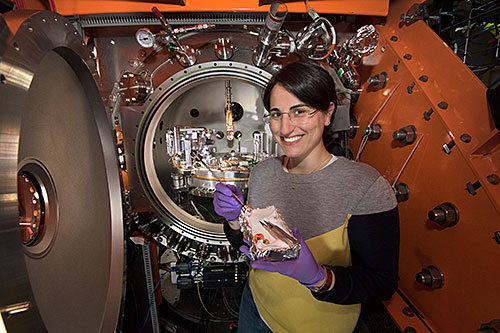
World-Record RIXS Resolution at SIX
At the Soft Inelastic X-ray (SIX) beamline, researchers achieve a world record in energy resolution using resonant inelastic X-ray scattering , a technique that yields information on the structure and dynamics of electrons in a sample. More...

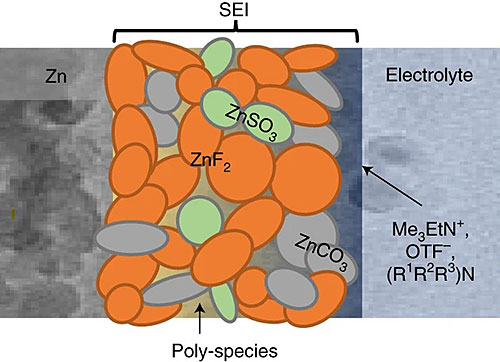
Top Cited Paper of 2021
Fluorinated interphase enables reversible aqueous zinc battery chemistries – Nature Nanotechnology – August 2021
Researchers describe an aqueous zinc battery with excellent performance, overcoming some of the challenges of using zinc in battery electrolytes and establishing zinc batteries as viable systems for practical applications. They study their test cells, in part, at the NSLS-II Quick x-ray Absorption and Scattering (QAS) beamline. More...

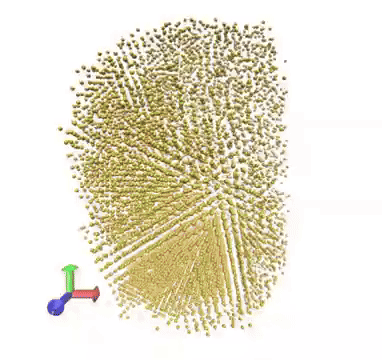
Record Breaking 7 nm Spatial Resolution at HXN
The Hard X-ray Nanoprobe (HXN) beamline achieves its highest resolution yet — 7 nanometers — allowing researchers to “see” details of their samples at an unprecedented, record-breaking resolution. More...

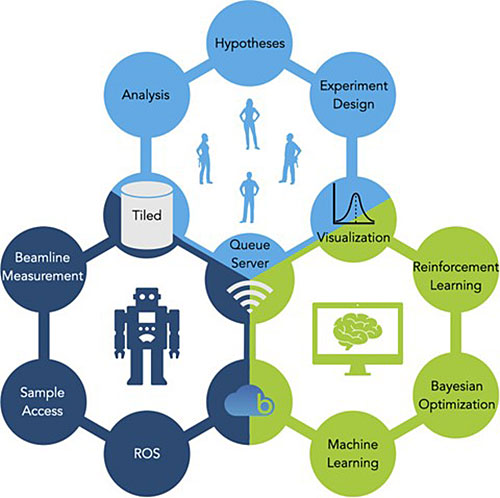
First Multi-Beamline, AI-Driven, Autonomous Experiment at an X-ray Light Source
Scientists at BMM and PDF perform a unified multi-beamline measurement of a single sample library using distributed AI agents that use analysis from each modality to inform the direction of the other in real time. This experiment, enabled by the NSLS-II developed Bluesky software suite, was a world’s first for beamline science. More...

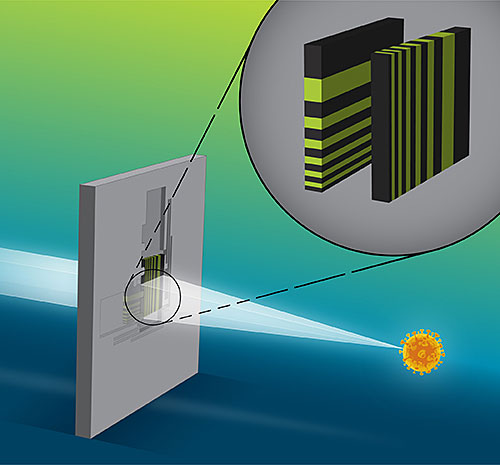
NSLS-II Scientists Win Microscopy Today Innovation Award for Bonded X-Ray Lenses
A team from NSLS-II develops a new lens system that combines two multi-layer Laue lenses set into a microfabricated silicon template. This design ensures few millidegrees of angular alignment between the two lenses and micron level placement accuracy along the x-ray beam direction. The new lens system achieves a resolution down to ~10 nm. More...

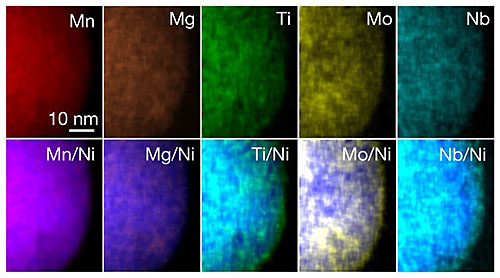
Top Cited Paper of 2022
Compositionally complex doping for zero-strain zero-cobalt layered cathodes – Nature – Sept 2022
Using a new complex doping strategy, researchers successfully fabricate a nigh-nickel, low-cobalt battery cathode with extremely high thermal and cycling stability, which they study in part at NSLS-II's QAS, FXI, and SRX beamlines. Since cobalt is volatile in pricing and difficult to mine, this work is an important step in the effort to eliminate cobalt's use in car batteries. More...


New Analysis Technique Developed at CSX
Researchers at the Coherent Soft X-ray Scattering (CSX) beamline develop coherent correlation imaging , which they use to image atomic-level magnetic domains in a ferromagnetic material for the first time. More...

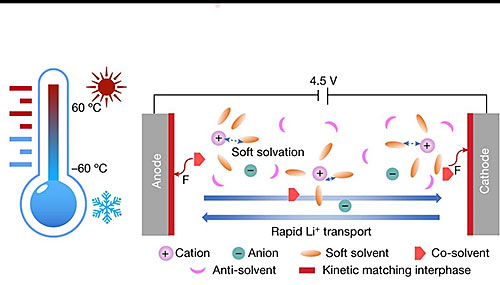
Top Cited Paper of 2023
Electrolyte design for Li-ion batteries under extreme operating conditions – Nature – Feb 2023
Scientists devise a vastly improved electrolyte design strategy for graphite lithium-ion batteries, leading to test cells that retain a remarkable 75 to 99.9 percent of their room-temperature capacity when operated at very cold temperatures. They study the cells' performance at NSLS-II's XPD beamline. More...


HEX Beamline Begins Operations
The High Energy Engineering X-ray Scattering (HEX) beamline, funded by New York State, is built to have the ability to micro-map materials for energy and engineering applications. Driven by a superconducting wiggler source, it currently generates the highest energy X-rays at NSLS-II. More...

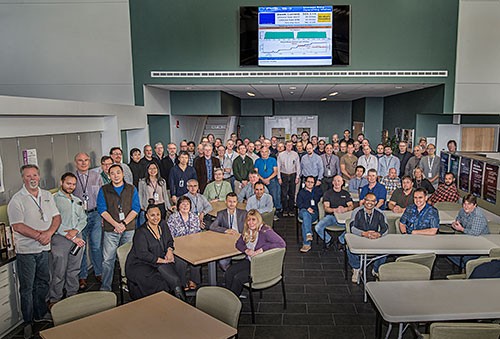
Reaching 500 mA During Regular Operations
The Accelerator Division reaches a milestone for machine performance during regular operations with a beam current of 500 milliamperes (mA). This current opens the door for even brighter X-rays for all of the experiments at the facility.

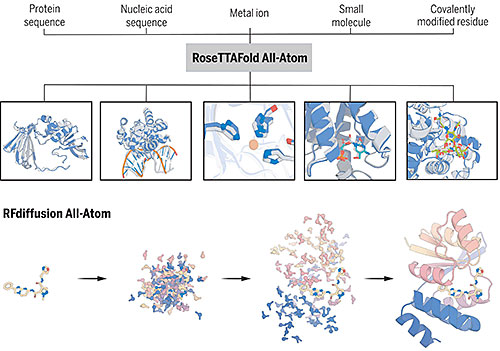
Top Cited Paper of 2024
Generalized biomolecular modeling and design with RoseTTAFold All-Atom – Science – April 2024
Researchers develop a next-generation protein structure prediction and design tool known as RoseTTAFold All-Atom, which could significantly impact drug design, the study of biological processes, and applications in biotechnology. Its designs are experimentally validated, which was done in part at the Highly Automated Macromolecular Crystallography (AMX) beamline at NSLS-II. More...


Unlocking The Last Lanthanide
Researchers from Oak Ridge National Laboratory and the National Institute of Standards and Technology observe promethium bonds in solution for the first time using X-ray absorption spectroscopy. More...


NSLS-II Celebrates Its First Decade of Discovery!
In 2024, NSLS-II hosts a record-setting 2,340 unique users, a more than 20% increase over the prior record in 2023. With 29 unique beamlines, multimodal capabilities, and advanced remote operations, NSLS-II is able to host more science than ever before. We look forward to an even brighter next decade – please join us!
